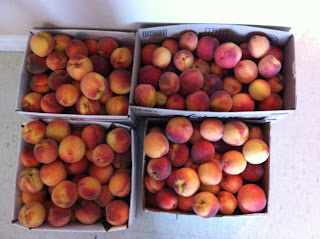- Micah 6:8
I have finished my first two week block of student teaching. One of the classes I was in was a grade 12 Global History class. My cooperating teacher showed them documentary after documentary focused on different issues. Films like Life and Debt (economic situation in Jamaica) and Slavery: A 21st Century Evil confronted kids with major issues in the world. They felt a little overwhelmed. What is their response supposed to be? Guilty enjoyment of their privileged lifestyle?
To be honest, I feel a little overwhelmed, too. Like the students, I get fed up with just hearing about a problem and feeling bad because I know I'm contributing to it. I wanted to research baby steps I can take to act more justly -- especially when it comes to what I buy. I didn't want to read theories about fair trade, I wanted a "cheat sheet" -- a list of things to avoid, things to support, and things to consider.
- www.greenamerica.org
- This site has a responsible consumer guide that puts companies in a list from best to worst. Companies are categorized by industry -- if you're about to buy a specific thing, you can browse through that category. The site's "Green Pages" offer better alternatives for the same category of products.
- www.ethicalconsumer.org
- This site gives different companies a “rating” based on different criteria (environment, people, animals, politics, etc.). What I really liked about this site is that you can decide what is the most important criteria to you -- by changing the emphasis to the environment, for example, the company ratings change. I think you need to subscribe to this to get the full information about the companies, but you can still check out the basic ratings for free.
- Fair Trade Canada www.fairtrade.ca
- “Most Wanted” Global Exchange List
- http://www.globalexchange.org/corporateHRviolators
- This site provides a list of companies that are best to avoid! … along with reasons WHY
- Red Thread: The Best and Worst Corporations
- This is an excellent article -- it gives a list of the best and worst companies for every category of product. Not only does it give the name of the company, it also gives lists the brands that the company owns -- what you as the consumer will actually see on the shelves!
- aletalane.wordpress.com/2011/05/.../the-best-and-worst-corporations/
- Chocolate and Candy: What to buy and what to avoid
- http://www.rageagainsttheminivan.com/2012/10/from-problem-to-solution-practical.html
- Key points I got out of it: avoid Hershey and Nestle! I appreciated how this article gave "not as bad" options and "good" (fair trade!) options. Sometimes I get frustrated when sites only give small, out-of-the-way or online companies as the fair trade options. This article is a bit more realistic -- "If you're going to buy chocolate that's not fair trade, at least stay away from these brands." I was happy to see that Toblerones were on the "not as bad" list!
- www.coffeehabit.com
- Drink responsibly! -- coffee, that is! This site is all about coffee and provides information on where different coffee brands and coffee buyers (example: Tim Horton's!) stand in the areas of justice. I had heard that if you are going to switch to anything that is fair trade, coffee and chocolate are some of the key industries that need to be held accountable. If I can drink coffee and eat chocolate with a clean conscience, I'm happy!
- World Vision: Don’t Trade Lives
- http://www.worldvision.com.au/Act/DontTradeLives.aspx
- This site has links to information about chocolate, coffee, palm oil, and other industries. It also has articles/guides around certain topics -- for example, how to have an ethical Christmas!
- How to Shop for Clothes Ethically
- http://www.wikihow.com/Shop-for-Ethically-Made-Clothes
- This is one topic that I really struggle with -- I'm cheap, remember?! A good alternative: buying used clothing or hosting clothing swaps!
- Good Guide
- www.goodguide.com
- Guide to the best and worst companies/brands according to category.
- www.labourbehindthelabel.org
- Click on their “resources” link -- they provide information on different companies and events, links and material to help you take action (example: a template of a letter to write to a local politician or your favourite brand).
One teacher at the high school actually has an app on her phone that apparently scans tags of clothes and can give feedback about where/how it's made? I'm not sure exactly how this works (I'm a little technologically challenged), but maybe this website can help:
- MacLife: 8 Apps for Fair Trade and Ethical Shopping http://www.maclife.com/article/gallery/8_apps_fair_trade_and_ethical_shopping
If anyone else has any resources or ideas, please share!






